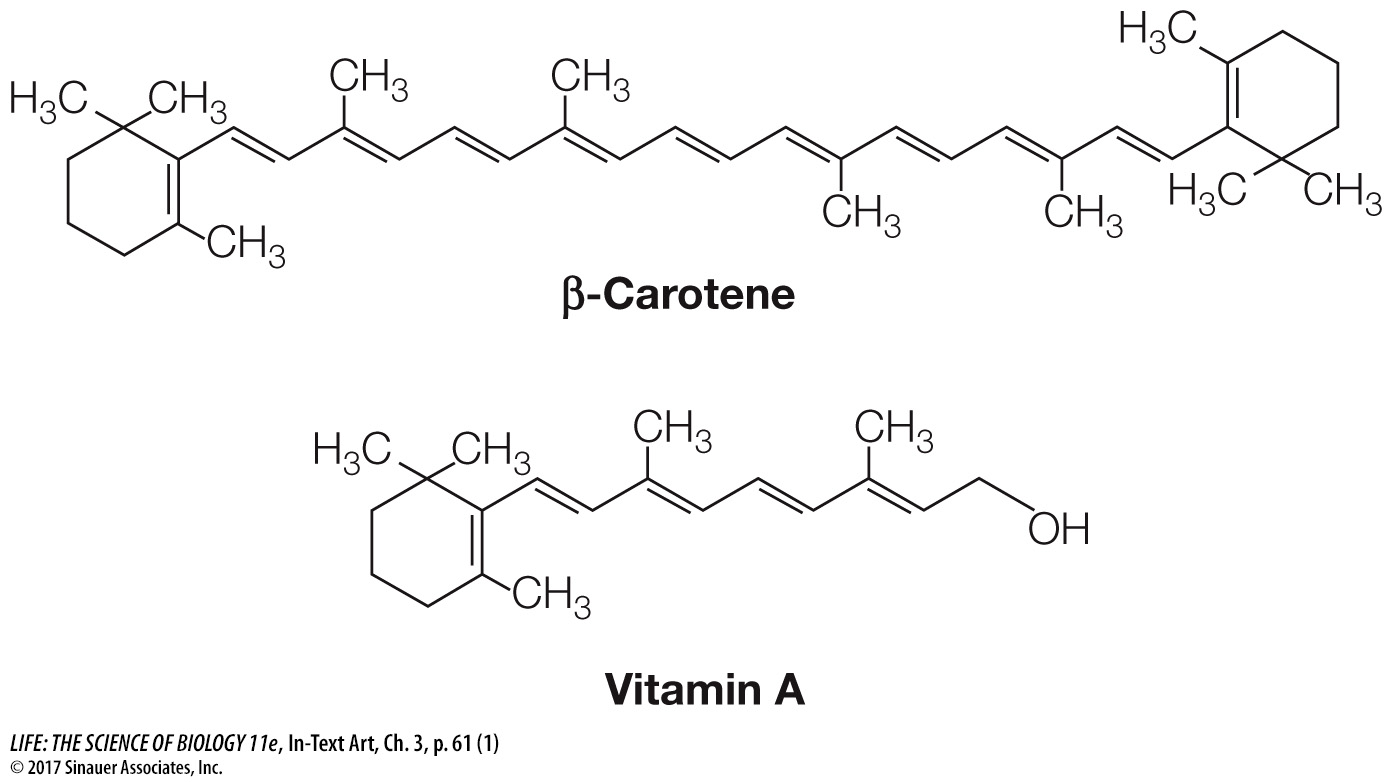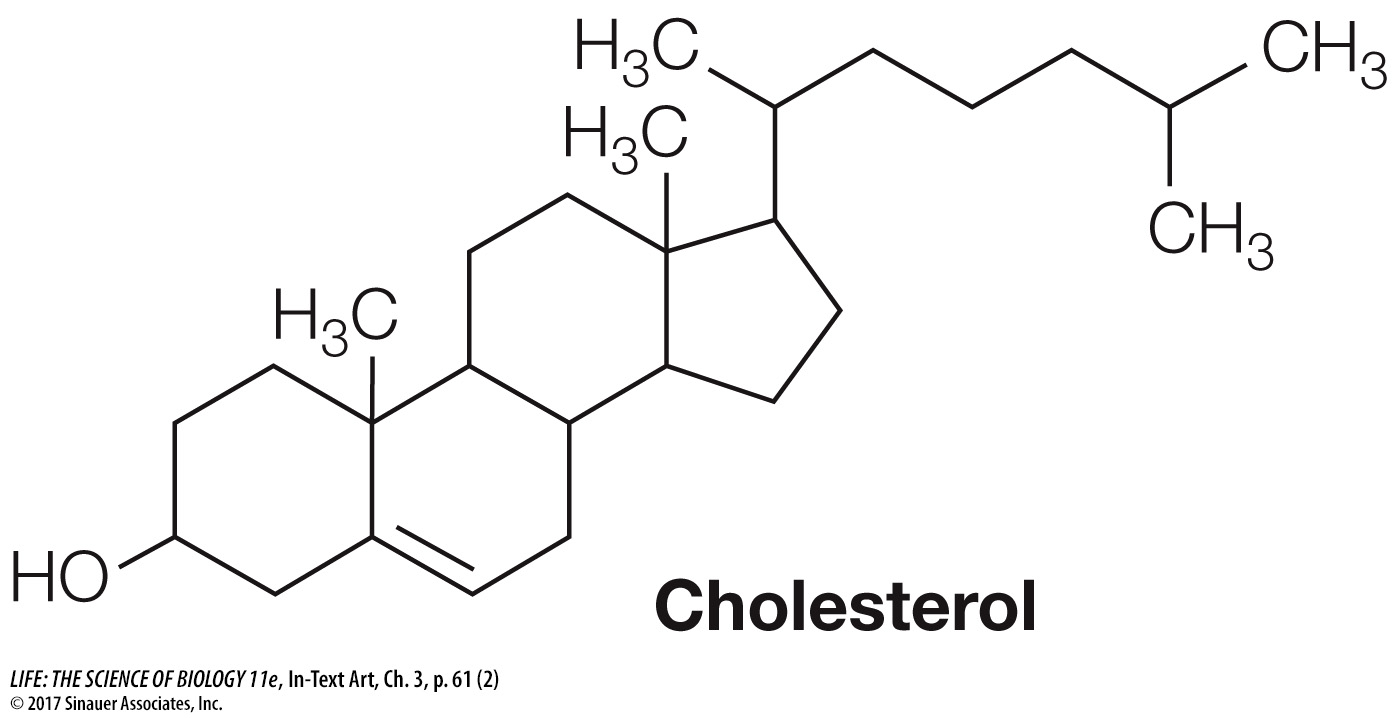Some lipids have roles in energy conversion, regulation, and protection
In the paragraphs above we focused on triglycerides and phospholipids—
CAROTENOIDS The carotenoids are a family of light-

Carotenoids are responsible for the colors of carrots, tomatoes, pumpkins, egg yolks, and butter. The brilliant yellows and oranges of autumn leaves are also from carotenoids.
STEROIDS The steroids are a family of organic compounds whose multiple rings are linked through shared carbons. The steroid cholesterol is an important constituent of membranes, helping maintain membrane integrity (see Key Concept 6.1).

Other steroids function as hormones: chemical signals that carry messages from one part of the body to another (see Chapter 40). Cholesterol is synthesized in the liver and is the starting material for making steroid hormones such as testosterone and estrogen.
VITAMINS Vitamins are small molecules that are not synthesized by the human body or in some cases are synthesized in inadequate amounts and so must be acquired from the diet (see Chapter 50). For example, vitamin A is formed from the β-carotene found in green and yellow vegetables (see above). In humans, a deficiency of vitamin A leads to dry skin, eyes, and internal body surfaces, retarded growth and development, and night blindness, which is a diagnostic symptom for the deficiency. You’ll see in Chapter 18 how plant biologists are producing crops that contain more vitamin A to alleviate this condition. Vitamins D, E, and K are also lipids.
WAXES Birds and mammals have glands in their skins that secrete waxy coatings onto their hair or feathers. These coatings repel water and help keep the hair and feathers pliable. The shiny leaves of plants such as holly, familiar during winter holidays, also have waxy coatings. Waxy coatings on plants can help them retain water and exclude pathogens. Bees make their honeycombs out of wax. Waxes are substances that are hydrophobic and plastic, or malleable, at room temperature. Each wax molecule consists of a saturated, long-